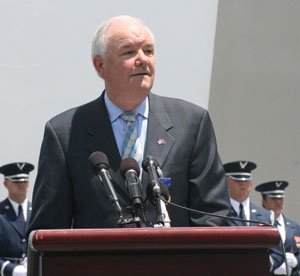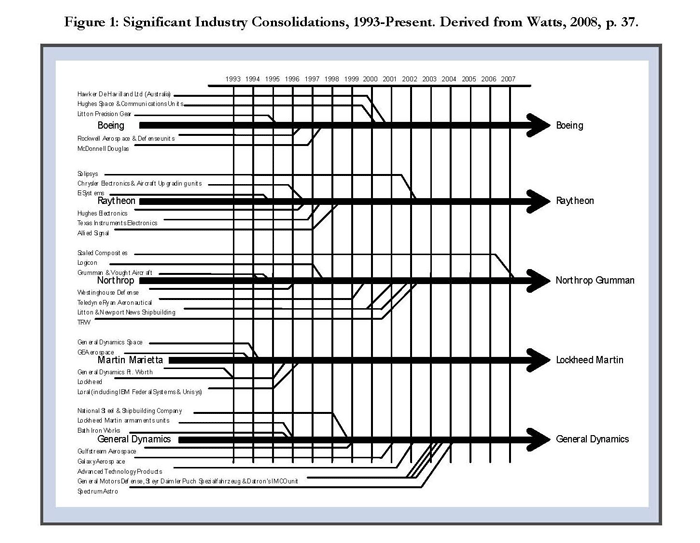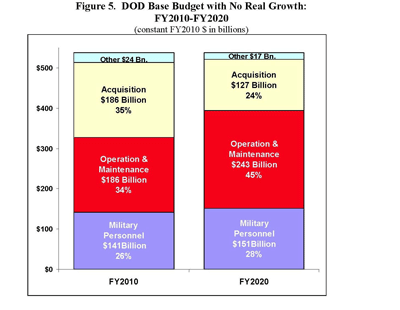
The Defense Industrial Base Under Pressure: How to Lead With Shrinking Manufacturing Capabilities?
Schumpeter, in his classic approach to creative economic destruction, watched consolidation in technologies and industries driven by natural forces until a secondary or new technology essentially destroyed the hold of one and created another set of competitive forces. The aerospace industry is barely one hundred plus years old, and here we have seen wave upon wave of consolidation, because of, and sometimes in spite of the Two World Wars, both in the area of commercial and military aircraft.
The impact of the cost as well as the convenience of electronics introduced into the Aerospace marketplace have extended the maturity curve for some products with modifications and enhancements, but had such a clear cost that one of Norm Augustine’s Laws has it that, at some point, Airplanes will be 100 percent electronic and cost as much for one as the whole Air Forces cost in his day. He then produced charts and graphs to prove same.
Towards an Aerospace Caucus?
Though well known, it bears repeating that asthe French are fond of saying, and doing, Great Nations produce Tanks, Ships and Aircraft; America is putting this to the test. We stopped producing Main Battle Tanks in the early 1990’s and are now modifying the ones we have left. We have turned from Blue Water Ships to Brown Water ships, expanding the number of yards, as we add at the low end, which the US Navy must support while at the same time cutting the number of total ships we buy annually. We now have a single yard that produces Aircraft Carriers and periodically wonder whether we should consolidate from the two producers of Submarines to one and consolidating that yard with the Carrier producer. Certainly the expected future volume of submarines will not solve this dilemma.
In aerospace, we look longingly at international producers, hoping that they will assist the United States by participating in losing bids while we apparently and periodically act to protect our remaining base; and our producers periodically sue international producers demonstrating to all the National Character of the remaining competitors. The world is watching as the United States commences the third round of selecting the future Tanker, and many push for one or the other, some for both.
One thing is clear: the issue of the industrial Aerospace Base is coming into clear focus, even if driven by this near commercial contest. As we have a ship building caucus in the Congress, will we now develop an Aerospace Caucus, or stay with the present ad hoc and losing strategy.
The United States holds back on the quantity of heavy lifters, while simultaneously leasing internationally produced Heavy Lift Aircraft from international Charter carriers, but would not hear of them competing in a head to head buy off. Were we to do a flow of funds in support of new construction, we would find that leasing actually results in new construction, responding to reliability needs. The plan is of course, to cut off any leases when peace arrives; but peace is relative; and the usual outcries of self reliance for military use are muted in the globalization arguments.
In Space, we used to hear outcries about escaping technologies. Now, one of our potent Rockets is powered by an imported engine, our commercial satellites get shopped across the globe in search of a cheaper launch into space, and we search for a breakthrough in the laws of physics which would put heavy satellites in orbit using light launch vehicles.
Our national Space competitor, China, is moving through our dance to the moon and stars with clear intentions to replicate our achievements, but likely combined with colonization and economic activity to demonstrate more than our achievements.
This now is considered by us as a frivolous pursuit, sort of like the discovery of America, because we now know what is out there, and are sending unmanned probes to scout for the competition. The Chinese have to be pleased with this approach, this sharing of scientific findings.
There has been complete consolidation in the launch business, as we move to stand down the Shuttle, and continue to work on the Laws of Physics relative to gravity, weight and mass. It is good to see the emergence of the ARES rocket, and hope for its success: one can only hope it is not just back to the future, but the restart of a Lunar Exploration before the Chinese simply lay claim to the moon and mail back our flags.
Limping Ahead
With recent decisions made, we now find ourselves with the following situation in the Aircraft industry:
- We have one large lifter, the C-5, being modified and aging. There remains one medium lifter, the C-17, produced in Long Beach, and limping along without support from the defense department, and no commercial support. There are two small lifters, the C-130, which unfortunately shares manufacturing facilities with the F-22, and therefore is anticipating a crushing increase in cost, which will likely erode its shaky support it currently enjoys; and the C-27 which is a derivative of the C-130 and needs the companion program to hold its costs to reasonable numbers. Not a pretty picture, and a tough period for industrial base planners to do other than limp ahead.
-
At present we have no Bombers in design or production, and modification programs, as good as they are, are not a substitute for design and build.
- In the Tactical Fighter space, we have two surviving manufacturers, at Saint Louis and Fort Worth: competent factories, but separated by at least one generation of technology and the Manufacturing Technologies as well. With the Joint Strike Fighter planning completion of testing in the 2014-2015 timeframe and the pressure on the fighting force to move to this new technology, albeit with a smaller fleet size, there will be real pressure on the industrial base planners and the base itself as to whether this should be sustained. Here as well, there are significant international competitions and competitors, even with the apparent penetration of the market by the F-35, that may present themselves as very competitive in the future. For the very first time, it will appear that America will have no new designs in this space coming forward. This will complete the design consolidation started almost from the invention of flight in the early 1900’s. And a measure of the lack of concern about defense industrial base issues turns around the F-22. Although the F-22 could have been exported to Japan and Australia, when termination became the dance, exports were not considered. And not a thought of the opening this gave to European producers of the Eurofighter apparently entered the heads of DOD decision-makers.
- The era of misnamed Unmanned Air Vehicles is being heralded as the future, although they are actually all remotely piloted, and the issue being the quantity and capability of the Remote pilot. It is hard to say where this is leading, but seems similar to the era of the self guided car was forecast during the 1964 worlds fair; so in any event we should forecast some maturation ahead. The UAV business was generated by a foreign power – Israel – and many foreign competitors will occupy this industrial space.
With a decline in acquisition budgets and investments in defense aerospace, and with the consolidation of the US manufacturers,
the challenge will be to produce, to innovate, and to export in a competitive global environment
Figure taken from Stephen Daggett, Congressional Testimony,
“Resourcing the National Defense Strategy: Implications of Long-Term Defense Budget Trends”
before the House Committee on the Armed Services (November 18, 2009)
(see: “See Stephen Daggett’s testimony)
But is this the Schumpeter technology pushing all of Aerospace off stage center, now that the array is down to nearly single producers in each functional class? And what is the governments’ role to maintain the United States as a great nation? Conversely, what is the role of commercial players in answering this same question? Asking the converse seems to highlight the role of government in satisfying the preamble to the constitution, which asserts we formed this Union to provide for the common defense. This is the difficult balancing role of the industrial base planner: as we near the end of the trail for the Eisenhower Industrial Base Complex, we wonder what is next?
***
Secretary Wynne will be writing a follow-on assessment of whether exports will be providing the remedy to industrial base pressures in the United States. Secretary Wynne was the 21st Secretary of the USAF; before this he served in the Bush Administration and Deputy Under Secretary of Defense for Acquisition, Technology and Logistics and then as the Under Secretary. Mr. Wynne has extensive industrial experience, including with the F-16, M-1 tank and military space programs.
———-
***Posted December 13th, 2009



